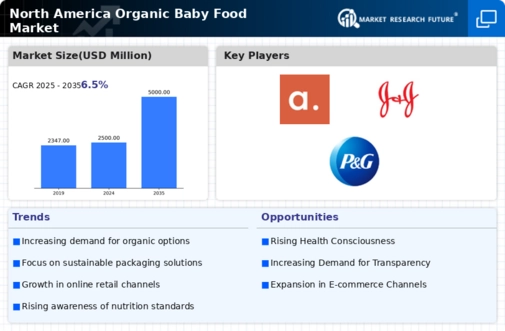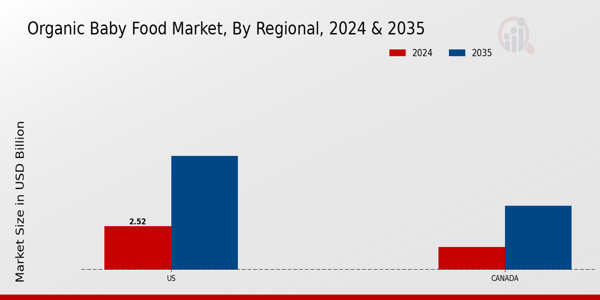The North America Organic Baby Food Market has become increasingly competitive as more parents seek healthier, organic options for their infants and toddlers. This demand is driven by rising health awareness among consumers, as well as the growing trend toward organic and natural products, influencing buying behaviors.
As the market expands, several key players are vying for significant market share, each aiming to distinguish their brands through unique formulations, marketing strategies, and distribution channels. The market features a diverse array of products, ranging from purees to snacks, often emphasizing dietary benefits and high-quality ingredients.
The competition includes well-established companies that possess substantial resources, branding capabilities, and distribution networks, enhancing their ability to innovate and capture consumer attention.
Earth's Best holds a formidable position within the North America Organic Baby Food Market, leveraging its established reputation for high-quality organic products tailored to infants and toddlers. One of its notable strengths lies in its comprehensive product range, which includes organic baby food jars, cereals, and snacks, all made from carefully sourced ingredients that meet the highest organic standards.
The brand benefits from a strong presence in major retail chains and e-commerce platforms, ensuring wide accessibility to consumers. Additionally, Earth's Best engages in effective marketing initiatives that resonate with health-conscious parents seeking safe and nutritious options for their children.
The brand's commitment to sustainability and environmentally friendly practices further solidifies its appeal among eco-aware consumers, creating brand loyalty and promoting repeat purchases. Hain Celestial Group is another major player in the North America Organic Baby Food Market, recognized for its diverse portfolio of organic and natural food products aimed at families.
With a focus on innovation, Hain Celestial Group continually introduces new products that cater to changing consumer preferences within the organic space. Its key offerings in the baby food segment include various organic purees, snacks, and cereals that emphasize quality ingredients and nutritional benefits.
The company's market presence is bolstered by strategic mergers and acquisitions that enhance its product lineup and solidify its foothold in the organic sector. Hain Celestial Group also benefits from strong branding initiatives that highlight the health benefits of its products, positioning itself as a trusted choice for parents.
The synergy created from its acquisitions and commitment to quality has contributed to its strength in the North American market, making it a notable competitor in the organic baby food landscape.















Leave a Comment